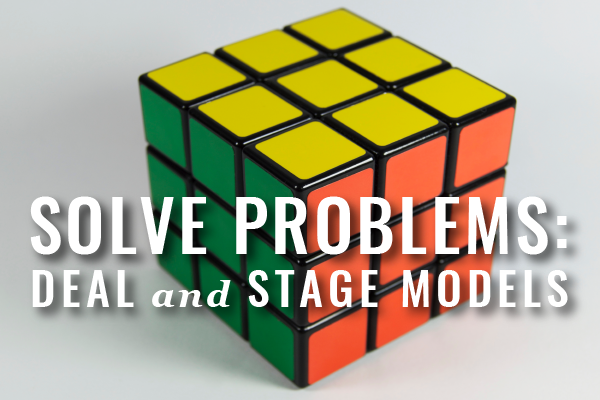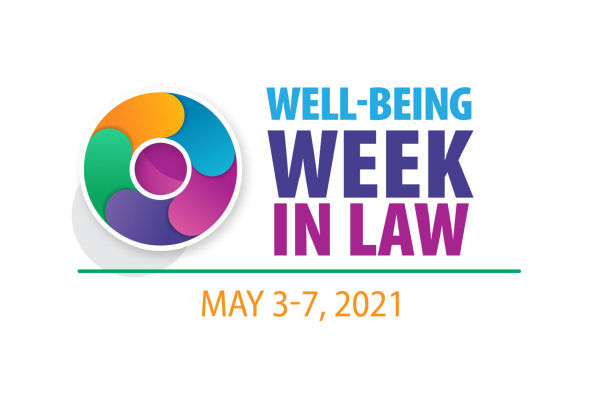Lawyers routinely deal with persistent problems and complex communication, which are often two sides of the same coin. Find out how to apply the DEAL model for problem solving and the STAGE model for courageous conversations below.
. . .
A post on LCL MA’s Well-Being Blog redirects here to our Mass LOMAP Blog. Click here to return to LCLMA.
. . .
Problem solving and communication skills are critical to career success for any individual, particularly those in the legal profession. And the success of any law firm depends on the quality of decisions and the timely flow of information and ideas. These are two of the most important responsibilities of law firm leaders. It’s not easy to make good decisions, those that support the success and growth of individuals and the organization, in response to difficult problems with the limited information and impatience of typical business environments. And it’s impossible to reach good decisions without good communication skills, including the ability to collaborate and negotiate effectively.
Two models we use together help our clients develop the problem-solving and communication skills necessary to lead through challenges: the DEAL model for problem solving and the STAGE model for communication. Discover how these models work through the following example.
The client is a small law firm with 10 partners working through a change in leadership. They act as if they are all in agreement about the value of the role and responsibilities of a managing partner, yet the discussion about the transition of responsibilities from Ben to Sienna keeps arising. Every time it arises, Sienna explains her willingness to take over the role that Ben has done for years without any compensation if she is properly valued. Where Ben had a traditional career with a stay-at-home wife and was more than willing and able to develop a robust book of business and manage the responsibilities of firm leadership, Sienna’s husband works similar hours to Sienna, and they have two children. They share responsibilities at home and with the children. Where Ben graduated law school without any debt, Sienna still shoulders a hefty monthly student loan payment. When the issue arises in a partners meeting, everyone other than Sienna and Ben are quiet observers.
Applying the DEAL Model to Solve Problems.
The DEAL Model breaks down into 4 steps: (1) Define, (2) Explore, (3) Avoid + Add, and (4) Look.
Define: Define a SMART problem. Make it Specific, Measurable, Action-oriented, Realistic + Relevant, and Time-Bound.
Explore: Explore different point of view on the problem. Who has an interest in the problem and solution? What are those interests? How does the culture and structure of the organization affect the problem and its solution? What are the criteria for a successful and implementable solution that others will accept? What are the consequences of not addressing the problem?
Avoid + Add: Avoid premature judgment and conclusion. Add in all components of the problems. What are we missing?
Look. Look for options to examine, evaluate, and possibly adopt. Test options and repeat the process.
In our example up until now, the problem hasn’t not been explicitly defined. Implicitly it has been defined to involve only two people, evidenced by the fact that only Sienna and Ben participate in conversations about the value of the role. The other eight partners are acting as if they are not affected by the issues of who will lead the firm and the value of the role and have no role in developing a solution. Using the DEAL model, the first step is to define a problem that is, among other factors, action-oriented. The absence of full participation by all partners limits the action available. The second step of the model is to explore different points of view. There has never been a deep dive into how and why to value the role, what value means to the different people in the room, the benefits other partners receive from having a managing partner and the cost of that benefit. There has never been a discussion about whether the partners would agree to compensate the role and if so, how. The third and fourth steps would allow the partners as a group to consider a range of previously ignored factors and process new solutions.
Applying the STAGE Model to Improve Communication.
The STAGE Model breaks down into 5 steps: (1) Share, (2) Test, (3) Acknowledge, (4) Goals, and (5) Effects.
Share: Share the facts first. What do you want? Why? What is your colleague’s response?
Test: Test assumptions. What beliefs, interests, and even biases may be at work? What assumptions may you have as a listener?
Acknowledge: Acknowledge what your colleague shared and how they feel. There is no need to agree – give them space to be heard.
Goals: Goals help shift the conversation to action. What outcome does your colleague want? How can you help and still move toward your goal?
Effects: Effects more broadly need to be considered. How would this conversation affect others in the firm? How can this conversation open up a path to change?
(c) 2016 Susan Letterman White and Dana Kirchman
In our example up until now, the conversation has been significantly limited. Again, no partners other than Sienna and Ben have participated in conversations about the value of the managing partner role. Facts are missing from the conversation and assumptions haven’t been unpacked, nor have Sienna’s and Ben’s feelings — which the first three steps of the STAGE model expose. With better clarity on relevant facts, assumptions, and feelings, the parties have a better understanding of the outcomes they desire as individuals and can identify what will affect the firm more broadly.
DEAL + STAGE Model Downloadable Handouts!
Click here to find both DEAL and STAGE Models in print-ready files. Keep them handy for your own reference, share them with team members for specific challenges, or use them as best practices in any training.




